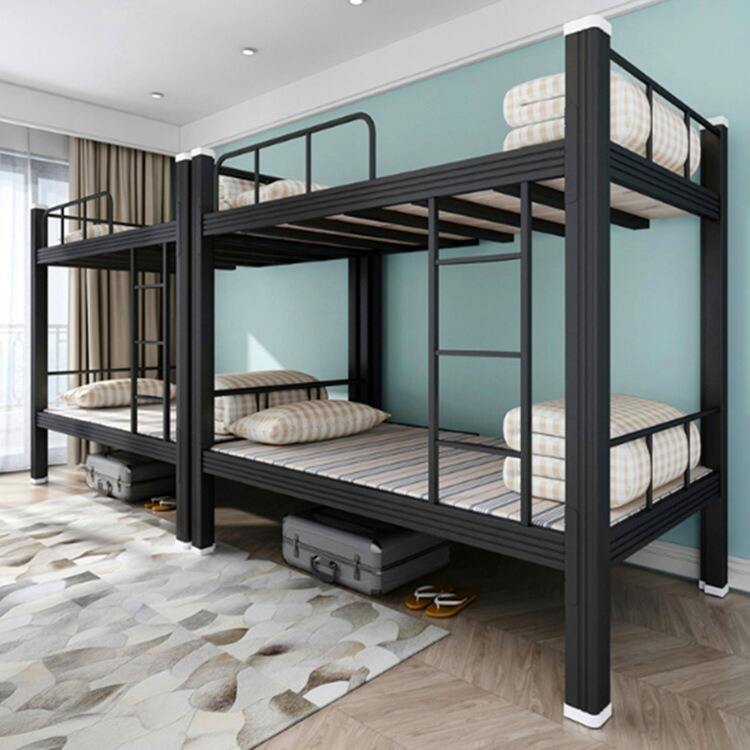Использование современных решений для сна в небольших помещениях
Когда каждый квадратный метр на вес золота, важны умные решения для экономии пространства. Металлическая двухъярусная кровать предлагает идеальное сочетание функциональности и стиля, превращая тесные помещения в организованное жилое пространство. Эти универсальные предметы мебели значительно эволюционировали по сравнению со своими традиционными казарменными корнями и теперь имеют изящные конструкции и инновационные компоновки, которые могут улучшить внешний вид любого помещения, удваивая его спальные места.
Современные металлические двухъярусные кровати сочетают в себе прочность и элементы современного дизайна, что делает их все более популярным выбором для городских квартир, детских комнат и даже загородных домов. Их конструкционная надежность и экономичный в использовании пространства дизайн делают их идеальным решением для тех, кто стремится максимально эффективно использовать каждый квадратный метр жилой площади, не жертвуя стилем и комфортом.
Элементы дизайна, повышающие эффективность использования пространства
Интеграция умального хранения
Современные металлические двухъярусные кровати часто включают встроенные решения для хранения, что делает их еще более практичными для небольших помещений. От встроенных книжных полок до выдвижных ящиков под кроватью, эти функциональные элементы помогают избежать необходимости в дополнительной мебели. Прочный металлический каркас может выдерживать различные аксессуары для хранения, такие как подвесные органайзеры, клипсы для освещения и прикроватные подставки, сохраняя при этом минимальное пространственное расположение.
Рассмотрите конструкции, в которых предусмотрены встроенные столы или рабочие станции под верхним ярусом. Такая конфигурация создает полноценное рабочее место без необходимости использования дополнительной площади, идеально подходит для студентов или удаленных работников, проживающих в компактных помещениях. Металлическая конструкция обеспечивает устойчивость во время сна и работы.
Универсальные варианты конфигурации
Металлические двухъярусные кровати обладают исключительной гибкостью в плане компоновки и размещения. L-образные конструкции позволяют эффективно использовать угловые зоны, а кровати в стиле лофт создают ценные открытые пространства под ними для дополнительной мебели или занятий. Конструкционная прочность металлических рам позволяет вносить различные изменения и настраивать их под конкретные потребности в планировке пространства.
Некоторые модели оснащены регулируемой высотой или съемными компонентами, что позволяет адаптировать мебель под изменяющиеся потребности. Благодаря такой универсальности металлические двухъярусные кровати становятся долгосрочной инвестицией, которая может меняться вместе с вашим образом жизни.
Преимущества материалов и показатели долговечности
Конструкционные преимущества металлической основы
Металлические двухъярусные кровати обеспечивают превосходную устойчивость и долговечность по сравнению с другими материалами. Прочный металлический каркас может выдерживать значительный вес, сохраняя при этом компактный профиль, что делает его идеальным для небольших помещений. Эти конструкции, как правило, требуют минимального обслуживания и могут выдерживать годы ежедневного использования без признаков износа.
Внутренняя прочность металла позволяет создавать более длинные пролеты между опорами, в результате чего линии получаются более чистыми, а пространство под кроватями — более открытым. Эта особенность особенно ценна в компактных комнатах, где каждый дюйм доступного пространства имеет значение.
Функции и стандарты безопасности
Качественные металлические двухъярусные кровати разработаны с приоритетом безопасности. Они включают в себя такие важные элементы, как надежные защитные ограждения, устойчивые лестницы и антискользящие поверхности. Металлическая конструкция позволяет точно соблюдать допуски при производстве, гарантируя, что все элементы безопасности идеально подходят и работают должным образом.
Обращайте внимание на модели, соответствующие или превышающие промышленные стандарты безопасности, с должным образом усиленными соединениями и гладкими, обработанными краями. Благодаря металлической конструкции эти элементы безопасности остаются надежными в течение всего срока службы продукта.
Советы по стилю для организации небольших пространств
Сочетание цветов и визуальное равновесие
Металлические двухъярусные кровати доступны в различных вариантах отделки, которые могут дополнить любую концепцию интерьера. Популярные варианты включают гладкий серебристый, матовый черный или окрашенные порошковыми красками цвета, которые могут либо выделяться как акцент, либо гармонично вписываться в существующий интерьер. Ключевой момент — выбрать отделку, которая обеспечивает визуальную гармонию и визуально увеличивает пространство.
Рассмотрите возможность сочетания металлической двухъярусной кровати со светлым, воздушным постельным бельем, чтобы создать контраст и избежать слишком индустриального вида конструкции. Использование зеркал и отражающих поверхностей рядом поможет усилить естественное освещение и создать иллюзию большего пространства.
Освещение и аксессуары
Правильное освещение имеет ключевое значение для небольших помещений с двухъярусными кроватями. Установите регулируемые настенные бра или светильники, которые крепятся на каждую ярусную секцию, чтобы обеспечить достаточное рабочее освещение без использования драгоценного пространства. Металлическая конструкция часто позволяет использовать индивидуальные решения для освещения, которые повышают функциональность и создают приятную атмосферу.
Выбирайте компактные аксессуары, дополняющие дизайн кровати и выполняющие практические функции. Подумайте о вертикальных системах хранения, выдвижных столах или подвесных полках, которые гармонично вписываются в конструкцию двухъярусной кровати и не захламляют пространство комнаты.
Обслуживание и долговечность
Регулярное обслуживание
Металлические двухъярусные кровати требуют минимального ухода для сохранения внешнего вида и конструктивной целостности. Регулярной чистки от пыли и периодической протирки влажной тканью обычно достаточно, чтобы каркас выглядел как новый. Для окрашенных или покрытых поверхностей избегайте использования агрессивных химических средств, которые могут повредить отделку.
Периодически проверяйте и подтягивайте все соединения и крепежные элементы, чтобы конструкция оставалась устойчивой и безопасной. Эта простая процедура технического обслуживания может значительно продлить срок службы вашего металлического двухъярусного ложа, обеспечивая постоянную безопасность его пользователей.
Долгосрочные соображения ценности
Инвестиции в качественное металлическое двухъярусное ложе часто оказываются более экономичными в долгосрочной перспективе. Прочность металлической конструкции означает меньшее количество ремонтов или замен по сравнению с другими материалами. Кроме того, классический дизайн многих металлических двухъярусных кроватей позволяет им адаптироваться к изменяющимся тенденциям интерьера благодаря простому обновлению постельного белья и аксессуаров.
Учтите потенциальную стоимость перепродажи и универсальность выбранной вами модели. Высококачественные металлические двухъярусные кровати часто хорошо сохраняют свою стоимость, что делает их разумным вложением для тех, кто в будущем может захотеть обновить или изменить свои жилищные условия.
Часто задаваемые вопросы
Какую максимальную нагрузку может выдержать типичная металлическая двухъярусная кровать?
Большинство стандартных металлических двухъярусных кроватей могут выдерживать 200–250 фунтов на каждую спальную поверхность, хотя модели повышенной прочности могут выдерживать больший вес. Всегда сверяйтесь с техническими характеристиками производителя, чтобы узнать точные пределы веса, и убедитесь, что кровать соответствует стандартам безопасности для вашего использования.
Какой зазор необходим между верхним ярусом и потолком?
Рекомендуется минимум 33–36 дюймов между верхним матрасом и потолком для обеспечения комфорта и безопасности. Это обеспечивает достаточное пространство для удобного сидения в постели и правильную вентиляцию, а также предотвращает случайное соприкосновение с потолочными приспособлениями.
Можно ли разъединить металлические двухъярусные кровати в отдельные кровати?
Многие модели металлических двухъярусных кроватей имеют возможность разделения, что позволяет использовать их как отдельные односпальные кровати. Эта функция добавляет универсальности и увеличивает срок службы вашей покупки, делая её пригодной для будущих изменений и различных планировок комнат.


